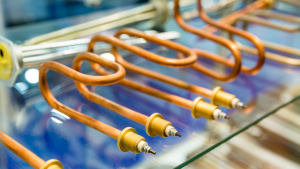
If you’ve ever worked long-term in any office, you know the eternal battleground of the office thermostat. Some like it hot, some like it cold, and businesses find it almost impossible to please everybody. It’s been extensively shown that when it’s too hot and productivity slides. Too cold, and the same thing happens. Other factors crowd in, too, like humidity, personal preference, and even gender and age.
In a survey conducted by construction software review company Software Advice, a full 50 percent of employees report being often unhappy with the temperature in their office. Forrest Burnson, market research associate at SA, broke down the findings as follows:
- Women prefer a temperature of 72 degrees Fahrenheit (with 23 percent preferring it as warm as 80!); men are fine with 70.
- Older people are more frequently more dissatisfied with office temperature than younger employees.
- More workers complain about the cold in winter than the heat in summer (by about 14 percent). But even then, only 26 percent of employees say the office temperature in summer is “just right.”
Burnson points to the frequently cited Helsinki study of 2004 that proves the link between productivity and office temperature: For every degree above 77 in that study, productivity dropped by 2 percent.
Isn’t it easier to just set the thermostat to the “perfect temperature”?
Maybe—but the perfect temperature is always shifting.
According to one study, the ideal office temperature to maintain in summer is between 71 and 77 degrees. If the temperature is higher, your performance can decline across the board, from your ability to make decisions and perform simple cognitive tasks to your motor skills.
Another study used a much lower and narrower range when doing its productivity study: “Workplace performance increases with temperatures up to between 69.8 degrees and 71.6 degrees Fahrenheit (21 degrees to 22 degrees Celsius), with the highest productivity at around 71.6 degrees Fahrenheit.”
In fact, while researchers seem to agree that productivity is directly affected by the temperature, none seem to agree on what the best temperature is. The accepted range of temperature levels — as stated by ASHRAE, the American Society of Heating, Refrigerating and Air-Conditioning Engineers — is between 67 and 82 degrees, depending on the season. That’s quite a spread. Productivity still tapers off at the lower end of that range. A Cornell study that found that raising office temperatures from 68 to 77 degrees lowered typing errors by 44 percent and raised output by 150 percent.
Controlling a building’s indoor environment so that the majority of occupants are comfortable is really a matter of three things:
- Knowing the makeup and demographics of your occupants
- Allowing facility managers to monitor facility sectors
- Investing in Building Automation
While the first point is something you can do right now, the latter two points are inextricably linked. Building Automation Services (BAS) allow your facility managers to know on a minute-to-minute basis exactly what is happening within your building, and allow quick updates to settings for HVAC, lighting, and security. BAS can be set to respond to the season, outside temperature, and even the amount of sunlight hitting the building—making your HVAC massively more effective at keeping people comfortable.
If you’d like to learn more about Building Automation Services, we at Level One HVAC are just a call away at (248) 486-6500. If you don’t have time for a lengthy phone call, simply fill out our online contact form and someone from our staff will be in touch with you shortly.
Stop by our social media accounts for all the latest news and information : Facebook Fan Page / Twitter Feed / Google+ Account / LinkedIn Company Page













